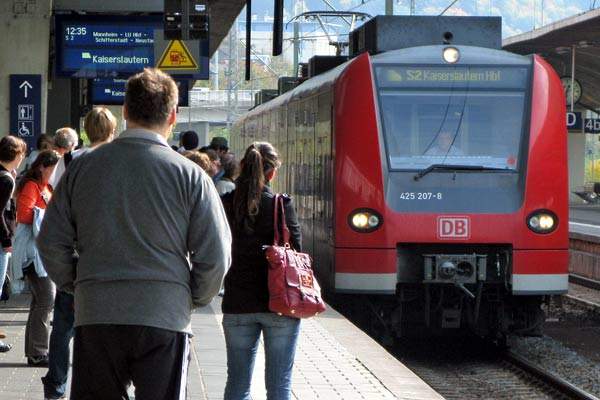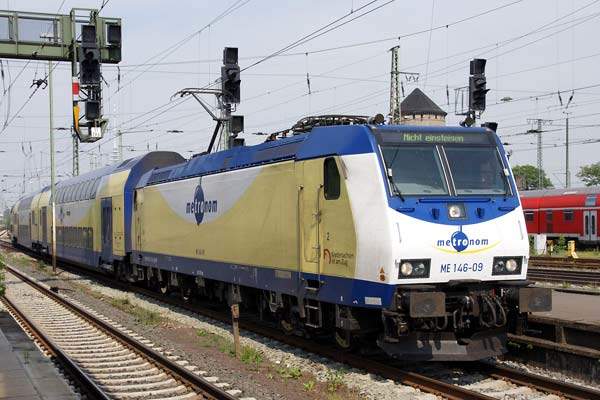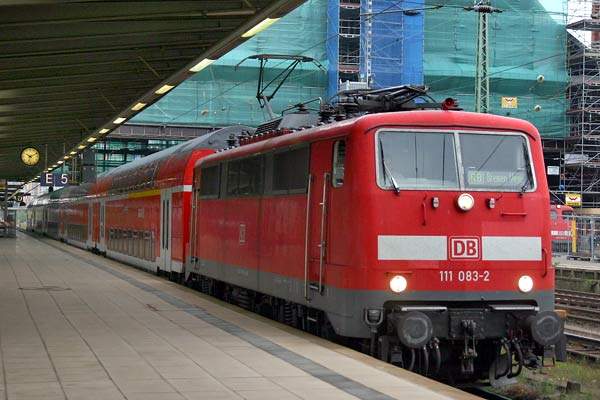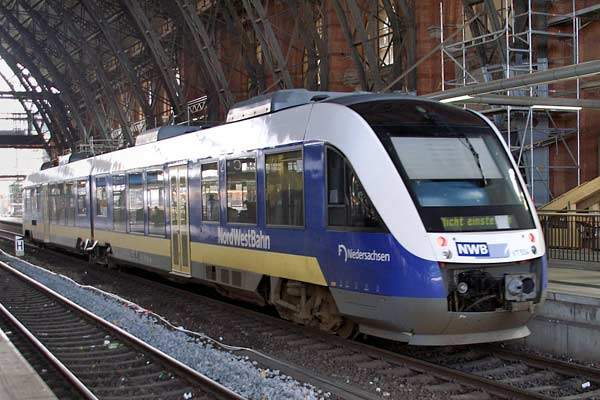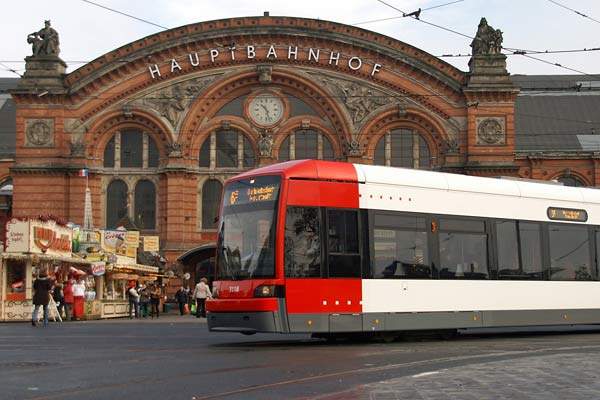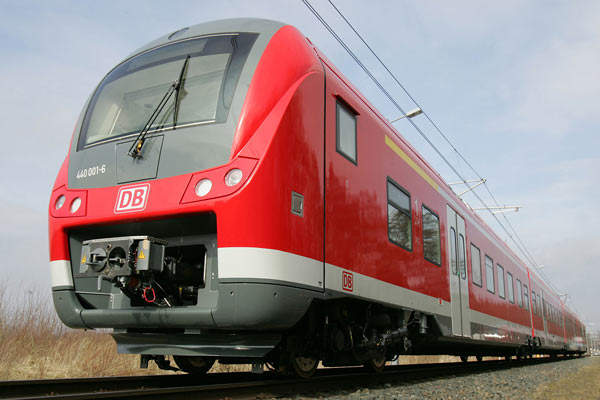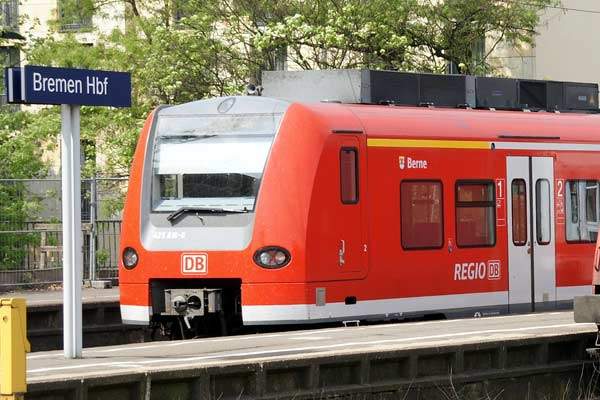The German S-Bahn format and designation has been widely adopted, including in some other countries. It is popular where demand justifies frequent regular interval trains running over a network of designated routes to serve inner areas, suburbs and the area’s wider catchment. The latest S-Bahn project to be announced is in Bremen.
In spite of common identity such as the term S-Bahn (derived variously from stadt/city and schnell/fast) and signage of a white S on a green circle, service intensity and technical variations occur on the many networks.
Berlin and Hamburg use non-standard dedicated infrastructures; while many like Munich and Frankfurt Main have some dedicated sections and some shared with main line trains.
Karlsruhe and Saarbrücken use tram-train operations. Although multiple units are the main S-Bahn motive power, locomotives are used in some places.
Composed of the cities and separated territories of Bremen and Bremerhaven, Bremen is Germany’s smallest state. The network, which covers a population of 660,000 in a mixed urban and rural area, became operational in 2010.
Largely using existing standard infrastructure, it is made distinctive by its launch operator and choice of motive power.
The project
Centred upon Bremen Hauptbahnhof (Hbf), 62% of the new S-Bahn will be within the surrounding state of Niedersachsen (Lower Saxony) and within the coverage of the public transport ticketing body Verkehrsverbund Bremen/Niedersachsen (VBN). These states had previously replaced national operator Deutsche Bahn (DB) from some regional express services with Metronom, their jointly owned (with Hamburger Hochbahn) operating company.
A feature of the project is that it will be the first German S-Bahn operating over the electrified network to be run entirely by a private organisation, a departure from the DB monopoly of the country’s electrified S-Bahns. Being an entirely new network, the private sector was able to compete more effectively. Earlier in 2008 a would-be operator withdrew from contract bidding in Stuttgart, due to the extra costs incurred by a transfer of operators from the incumbent DB.
Already operating in north-west Germany and with a presence in the German rail market since 1997, Veolia transport subsidiary NordWestBahn (NWB) was confirmed as winner of the Bremen S-Bahn contract in July 2008. The award for 11 years of operations was based on being the most competitive price and the high quality aspects of the projected service. The final decision followed an unsuccessful objection by DB over aspects of the contract tendering.
Infrastructure
Using existing lines and the standard 15kV ac overhead supply throughout, Bremen S-Bahn will have four routes with a combined total of 270km (169 miles). Ease of passenger access to trains and at all stations is promised under the contract.
With ‘clock face’ departures at intervals varying between 15 and 60 minutes that should allow for convenient transfer to other public transport, some routes will have end-to-end operation and some will use combinations of shorter services:
- S1 Bremen-Farge – Bremen Hbf – Verden (Aller)
- S2 Bremerhaven-Lehe – Bremen Hbf – Twistringen
- S3 Nordenham – Bremen Hbf
- S4 Oldenburg – Bremen Hbf
Rolling stock
Current coverage of these locations is by a variety of rolling stock types. The stock chosen for Bremen marks a departure from the early class 420 or modern emu classes 423 and 424 widely used by DB for S-Bahn services.
An order by Veolia worth around €150m for Alstom Coradia Lirex Continental units was announced in October 2008. The mix of 36 three and five-car sets will be built at Salzgitter in Germany. The 160km/h (100mph) units are from a family of articulated modular trains launched in 2002 that can be configured for local or longer distance use.
The wide-bodied Coradia Nordic X60 variant is already in fleet service with Storstockholms Lokaltrafik and with others are on order with DB and BeNEX for regional services around Augsburg and Regensburg respectively. The Coradia Lirex Continental for Bremen S-Bahn will be air-conditioned, have a constant floor height throughout, disability access toilets and designated wheelchair space.
Signalling and communications
Trains will operate over standard German rail infrastructure controlled by DB Netz. The winning S-Bahn contract promises on-board security staff for services operating after 21.00 and will be fitted. CCTV will be fitted, with audio service information and visual displays.
Ticketing will be within the unified VBN system. This also includes the extensive BSAG bus and tram network in Bremen which has a concentration immediately outside Bremen Hbf. Between 2010 and 2021 NWB undertakes to deliver around 4.7 million train-kilometres per year on the Bremen S-Bahn.
The future
The first three routes of Bremen S-Bahn are due to become operational in December 2010, with Bremen-Farge – Bremen Hbf – Verden joining the system in December 2011. The extended lines are expected to be on regular service from March 2012. In advance of the transition, incoming operator NWB and outgoing DB will need to restructure their staffing arrangements in the area.

